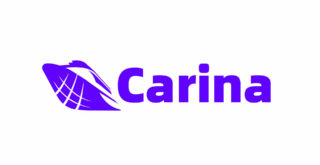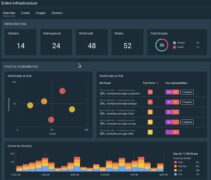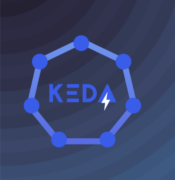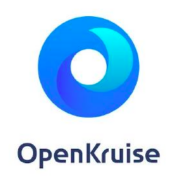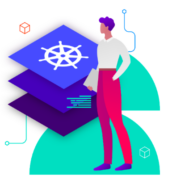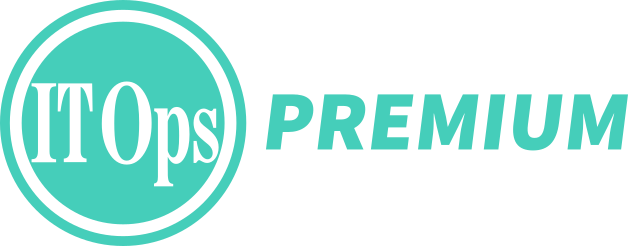Topic: kubernetes
ITOps Times Open-Source Project of the Week: k0smotron
K0smotron is an open-source project for managing Kubernetes control planes. It was released earlier this week by the Kubernetes company Mirantis. The tool allows companies to rapidly provision Kubernetes control planes, and these control planes are also separated from worker nodes. According to Mirantis, this separation allows for provisioning of remote worker nodes, which supports … continue reading
Lightbend updates developer experience for Kalix
Lightbend, a company specializing in cloud-native microservices frameworks, has introduced a new Developer Experience (DX) for their Platform-as-a-Service (PaaS) offering called Kalix. Kalix provides a unique programming model that aims to swiftly build scalable, mission-critical, stateful applications using a serverless architecture while focusing solely on the application’s business logic. The platform works with Kubernetes-based cloud … continue reading
ITOps Open-Source Project of the Week: Crio-O
The Cloud Native Computing Foundation has announced the graduation of the CRI-O project, which offers a reliable and high-performing implementation of the Container Runtime Interface (CRI) for the Kubelet. It also enables the orchestration of Open Container Initiative (OCI) containers in Kubernetes environments used for production purposes. This graduation signifies that CRI-O has achieved a … continue reading
Flux v2 is now generally available
Flux v2.0.0 brings several enhancements to its functionality. Firstly, the GitOps-related APIs have been upgraded to v1. Also, Flux controllers now have the ability to scale horizontally and support sharding. The Flux CLI and Flux Terraform Provider now offer stable and production-ready Git bootstrap capabilities, streamlining the process of setting up Git repositories for Flux … continue reading
ITOps Times Open-Source Project of the Week: Kyverno
Kyverno is a policy engine designed specifically for Kubernetes and the name means “govern” in Greek. The management of policies in Kyverno is done through Kubernetes resources, eliminating the need for learning a new language to write policies. This approach enables the utilization of well-known tools like kubectl, git, and kustomize to handle policy management … continue reading
ITOps Times Open-Source Project of the Week: Volcano
Volcano is an open-source project used for running high-performance workloads on Kubernetes. Kubernetes does not natively provide batch scheduling, which is something required by many workloads, such as machine learning and deep learning, bioinformatics, and other big data applications. This is where Volcano comes in. According to Volcano, often those types of workloads run on … continue reading
ITOps Times Open-Source Project of the Week: Carina
Carina is a local storage solution for Kubernetes. It was accepted into the Cloud Native Computing Foundation (CNCF) in December 2022 as a sandbox project, and as of the time of this writing it was still at the sandbox level. Features include disk management, device registration, PVC resizing, scheduling based on capacity, volume topology, PVC … continue reading
Sysdig adds detection and response to CNAPP
Sysdig introduced agentless cloud detection based on open-source Falco, extending cloud detection and response (CDR) beyond workload agents to cloud, GitHub, and Okta logs in its Cloud-Native Application Protection Platforms (CNAPP). As organizations expand their cloud environments, they encounter sprawl consisting of hundreds of unregulated applications, services, and identities, which potentially present vulnerabilities. CNAPP can … continue reading
ITOps Times Open Source Project of the week: KEDA
KEDA is a Kubernetes-based Event Driven Autoscaler that helps users scale any container based on the number of events that need to be processed. Additionally, it can be added to any Kubernetes cluster and it works with standard Kubernetes components such as the Horizontal Pod Autoscaler. With KEDA, users can explicitly map the applications they … continue reading
ITOps Open-Source Project of the Week: Kuberhealthy
Kuberhealthy is a Kubernetes operator for running synthetic checks as pods and works best with Prometheus. The project is now part of the Cloud Native Computing Foundation (CNCF) and requires Kubernetes 1.16 or above. Users can write their own tests in any language and Kuberhealthy will run them to automatically create metrics for Prometheus. Kuberhealthy … continue reading
ITOps Times Open-Source Project of the Week: OpenKruise
OpenKruise is an extended component for Kubernetes that was built with a focus on application automation like deployment, upgrade, ops, and availability protection. The project became a Cloud Native Computing Foundation (CNCF) Incubating Project last month which means that the project is considered stable and used successfully in production. The majority of features offered by … continue reading
D2iQ announces update to its managed Kubernetes platform
The D2iQ Kubernetes Platform (DKP) 2.5 update simplifies multi-cluster and air-gapped deployments to give organizations greater consistency, visibility, security, and compliance across multi-cluster environments. Key enhancements in the new release include centralized multi-cloud, multi-cluster fleet management which enables customers to more easily manage a fleet of clusters through federated application management. Engineers can ensure consistency … continue reading







